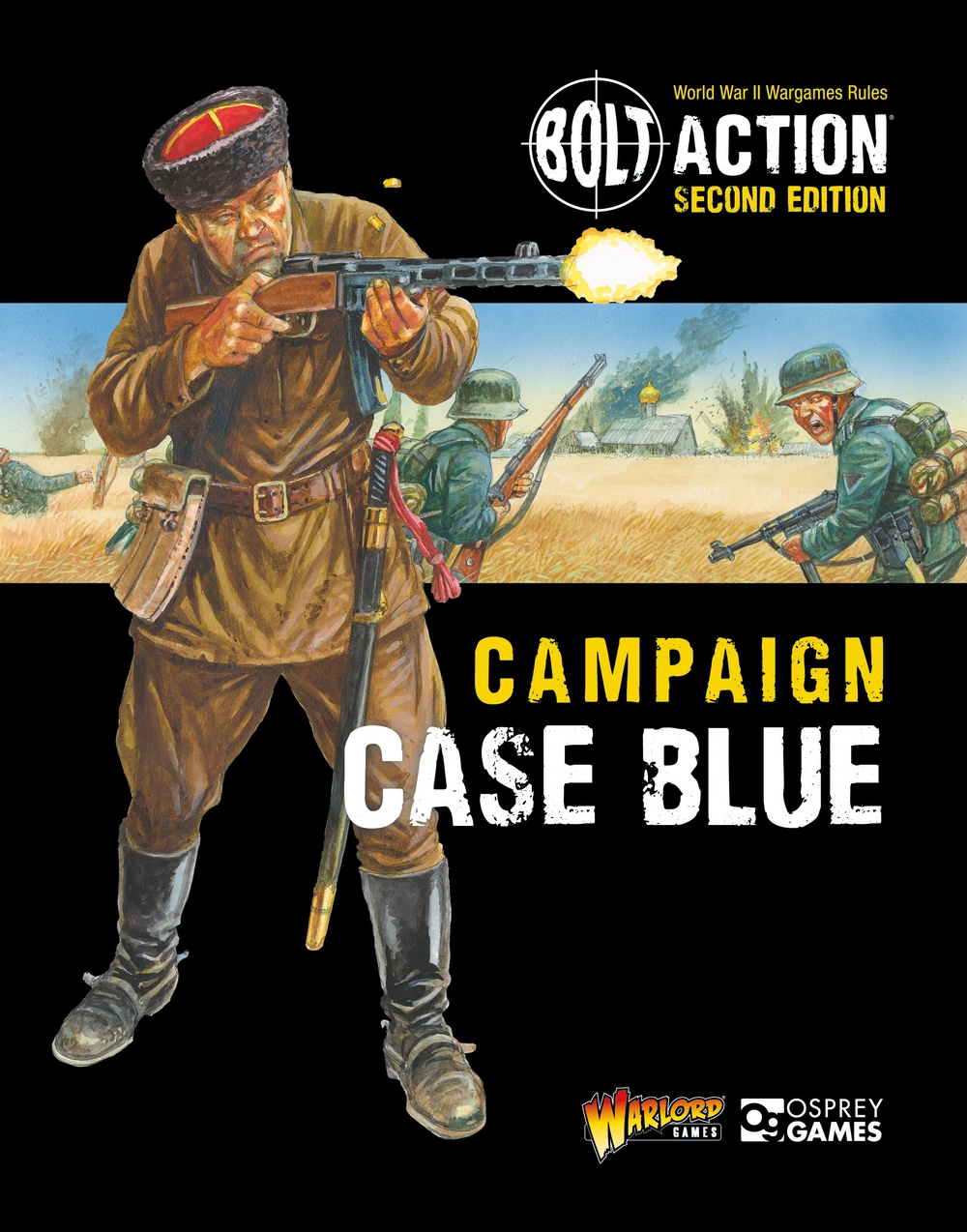
This year's second Bolt Action supplement, Campaign: Case Blue, is out now in the UK. Here's our second blog to give you historical inspiration to paint up your armies...
This Campaign Book for the award-winning World War II wargame, Bolt Action, focuses on the new plan devised after the failure of Barbarossa to utterly defeat the Soviet Union, Case Blue. This plan involved pushing through the southern Soviet Union to reach the Caucasus and secure the oil fields that Germany so desperately needed. While initially there was great success and sweeping advances as the autumn began, the Axis advances began to falter in the wake of Soviet resistance and counter attacks, culminating in the battles in and around Stalingrad.
If you want to start getting a German army table-ready, look no further than Warlord Games' German Grenadier Squad (Winter) set, pictured below, containing 10 figures.
And to get you inspired for painting with a historically accurate reference image, check out this illustration by Elizabeth Sharp and caption from Osprey Publishing's German Infantryman (2) Eastern Front 1941-43.
"Stalingrad – the place where the German 6th Army was defeated. These men are illustrated in three different styles of winter clothing, ranging from the basic to the slightly more effective. The campaign in the east was intended to end by Christmas 1941, with the German Army warmly ensconced in Moscow, Leningrad and elsewhere, not digging in or rather building up in open plains amid sub-zero blizzards, ice and snow. This miscalculation left the Germans in the front line outside Moscow facing adequately equipped Russian troops in nothing more than their summer uniforms, greatcoats and whatever else they could beg or steal.
(1) The man on the left is dressed in the standard uniform, and has made some attempt to conceal himself from the enemy. Stolen sheets provide some vestige of cover, but dirt from trenches, weapons, explosives, mud and food have contrived to make him look more like a refugee than a member of a proud fighting force. The main problem, noted by the Finns early on in the war, was that the Germans had studs going into the soles of their boots. In sub-zero conditions, these studs have no grip and worse, they conduct the cold straight into the wearer’s feet. This man has wrapped sacking round his boots in the vain hope that this will keep him warmer.
(2) The man in the middle is slightly better dressed, but like everyone in Stalingrad, lack of food and sleep contrived to render him less and less effective as a soldier. However, as a sniper he has to wait for long periods in the cold, and has been issued with a winter camouflage uniform, a fur hat and some sensible boots. He carries a Kar 98k with a telescopic sight and a winter trigger, so that he can fire the weapon without putting bare skin onto the trigger, where it would freeze solid.
(3) The man on the right has a much better sheepskin coat, together with kapok trousers, good boots and a fur hat. He also has had the sense to relieve a Russian soldier of his sub-machine gun, for Russian machine-guns guns were far better at operating in the cold conditions, unlike the German issue MP38 and MP40, which froze repeatedly."
- David Westwood, author of German Infantryman (2) Eastern Front 1941-43
Bolt Action: Campaign: Case Blue is out now in the UK,
and will be out January 2024 in the US.




Comments
You must be logged in to comment on this post. Click here to log in.
Submit your comment